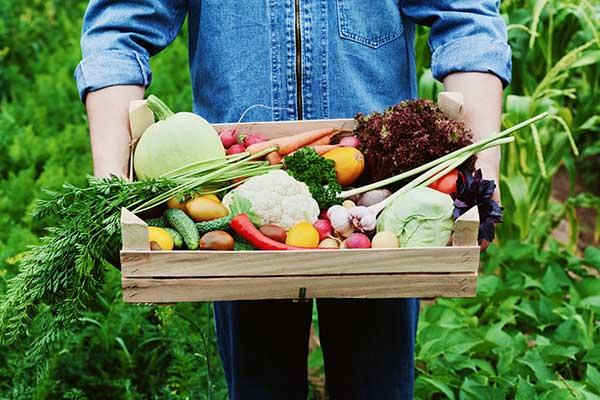Fall Vegetable Gardening Guide

Fall vegetable gardening is likely just as enjoyable for many people as reaping the rewards of spring and summer gardening. Learn how to plant your fall vegetable garden and enjoy fresh, healthy vegetables throughout the fall season.
Planning Your Fall Garden
Before you run out and purchase vegetables to set out in your garden or dig a space and plant fall vegetable seeds, you need to have some knowledge about fall vegetable gardening. Study The USDA Plant Hardiness Zone Map on the USDA website.
If you decide to start your garden from seed, most seed packets also have a similar zone map on the back of the seed packet. The map displays different areas of the U.S. as color-coded zones. Review it to learn when to plant each type of vegetable seeds in your area.
Many garden centers and big box stores sell fall vegetable plants just as they do in spring and summer. Scrutinize the plants and do not purchase any with drooping or brown leaves or that seem otherwise unhealthy.
Plan the area that you will utilize as your fall garden space. Some of the same considerations such as soil and light that go into your spring and summer garden planning are also important for planning your fall vegetable garden.
If you live in an apartment or have only a small garden space available, consider growing container vegetables. You do not have to give up gardening simply because you only have a small space available.
Make sure you use containers large enough to support your growing vegetables and place them where they will receive the level of light or shade that each type of plant requires, according to growth tips on vegetable pot labels, seed packets or and the USDA zone map.
Know What to Grow
Once you know the planting zone you live in, you can determine what you can plant in your garden. You also need to know which vegetables are safe to plant next to or close to each other and which ones you have to keep separate from one another.
An important factor is that you not plant a fall vegetable in the same space where you just harvested an anti-partner to that particular fall vegetable. For example, even if you remove all the spring and summer onion plants from a defined area, planting beans there will likely result in stunted growth and low yield. Your legumes will fare better planted elsewhere.
Once all your summer tomatoes are gone, do not plant cabbage in the same garden spot. Cabbages and tomatoes are also examples of vegetables you should not plant in the same space once tomato season ends.
You also need to know which vegetables will have time to fully mature and be ready for harvest before the first frost. You cannot eat your garden vegetables if the frost kills them. Some fall vegetables, such as certain varieties of greens, including collards or turnip greens, often survive beyond the first frost if properly covered when it arrives. Some people plant vegetables that withstand colder temperatures in succession over a few weeks to have fresh, healthy garden vegetables throughout the fall garden season.
19 Vegetables that can be planted in the Fall
Below are some vegetables that will thrive during the Fall weather.
- Beets
- Broccoli
- Brussels
- Cabbage
- Carrots
- Cauliflower
- Celery
- Collards
- Green Onions
- Leafy Lettuce
- Kale
- Leeks
- Mustards
- Parsnips
- Radishes
- Rutabagas
- Spinach
- Swiss Chard
- Turnips
Pros and Cons of Fall Vegetable Gardening
Everyone knows that home gardeners get nutritious vegetables without the worry of exposure to the herbicides and pesticides common for produce in some grocery stores. People who plant a fall vegetable garden also enjoy their food at substantial savings over grocery store prices, which usually rises substantially once the weather starts to cool.
By the fall, most of the weeds that plague summer gardens will already have died out, which is especially advantageous to those with minimal time to do the work. For those who do have the time, particularly if they have families, there are educational benefits to be gained by planting, tending, and harvesting vegetables. Children learn the value of growing food, eating healthy, and saving money.
On the downside, sudden extremes in weather conditions do sometimes occur in the fall, especially later in the season in zones that have harsher temperatures or heavier rainfall. Take necessary precautions, such as following planting guides so you can get your harvest in before expected weather extremes strike. Protect your vegetables and the plants by covering them on colder nights.
Remember that fall vegetable gardens require ongoing care. If you fail to plant according to directions or water when needed, you will likely see dead vegetables, stunted growth, or no plants at all.
Learn the basics of planning and planting your fall garden, even if you have limited space. Then follow a few simple tips to care for your fall garden and sit back and enjoy healthy fresh vegetables for your family and yourself.




